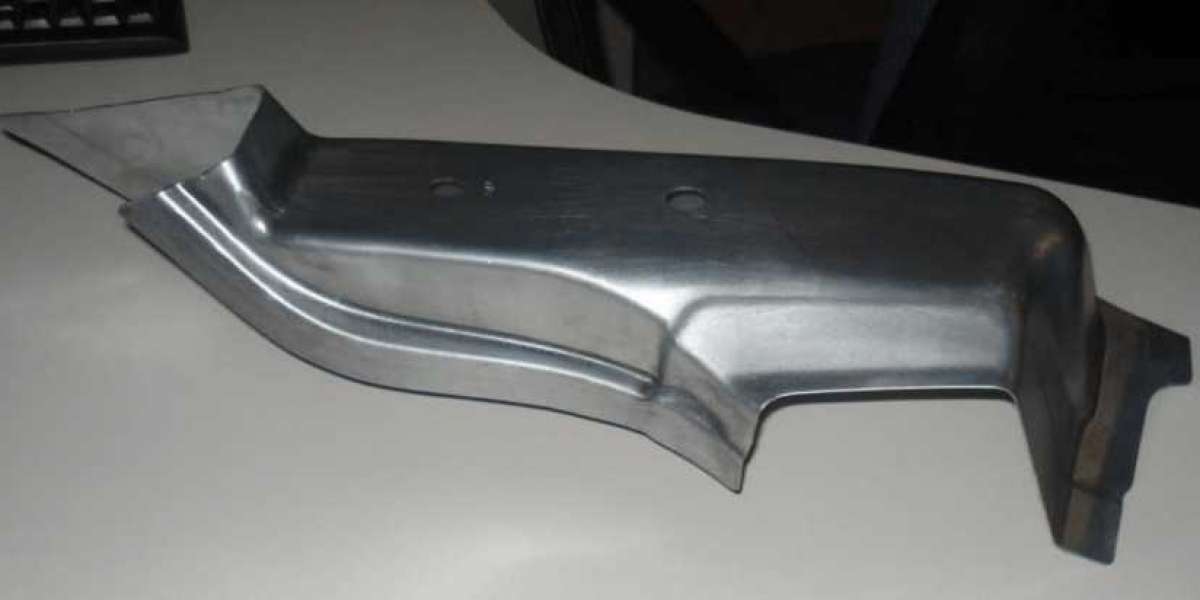Introduction to Sheet Metal Prototyping
In today's fast-paced world of manufacturing, product designers and engineers are always looking for ways to streamline the design process and quickly bring ideas to life. One key technique that has proven to be extremely valuable is sheet metal prototyping. This process allows manufacturers to create high-precision prototypes that can be tested, modified, and iterated upon quickly. Sheet metal prototyping plays a significant role in a wide range of industries, from automotive to electronics, providing faster development cycles and cost savings.
In this article, we’ll explore what sheet metal prototyping is, its benefits, and how it is transforming product development.
What is Sheet Metal Prototyping?
Sheet metal prototyping refers to the process of creating prototypes using thin sheets of metal, typically ranging from 0.2mm to 6mm in thickness. These prototypes can be used for testing, product evaluation, or design verification before mass production. The materials used in sheet metal prototyping include steel, aluminum, brass, copper, and more, depending on the specifications of the final product.
The sheet metal prototyping process involves several stages, including design, cutting, bending, welding, and assembly. Modern technologies like laser cutting, CNC (computer numerical control) machining, and 3D modeling software have made it possible to create highly detailed and functional prototypes with incredible precision.
Advantages of Sheet Metal Prototyping
- Speed and Efficiency
One of the biggest advantages of sheet metal prototyping is speed. Unlike traditional manufacturing processes that might take several weeks to produce a prototype, sheet metal prototypes can be produced in a matter of days. This allows engineers and designers to test their ideas quickly and make necessary adjustments without a long waiting period.
- Cost-Effectiveness
Sheet metal prototyping is often less expensive than other prototyping methods like plastic injection molding or 3D printing, especially when working with metals that are readily available. The cost of creating the initial tooling for metal prototypes is relatively low, and manufacturers can reuse these tools for future runs. Additionally, sheet metal prototyping can help reduce the overall cost of production by identifying design flaws early on in the process, saving companies from making costly changes during the mass production stage.
- High Precision and Accuracy
Sheet metal prototypes are known for their precision. Modern CNC machines and laser cutting technologies allow for precise cuts, bends, and welds, ensuring the final prototype closely matches the original design. This level of accuracy makes sheet metal prototyping ideal for industries that require high levels of detail, such as the aerospace, automotive, and electronics sectors.
- Design Flexibility
Sheet metal is versatile, offering the ability to create a wide variety of shapes and designs. Prototypes can range from simple components to more complex, multi-piece assemblies. This flexibility in design allows engineers to explore different configurations and materials, optimizing their product before committing to full-scale production.
- Durability and Functionality
Since sheet metal is sturdy and durable, prototypes made from metal can be tested for their performance and durability. This means manufacturers can evaluate the function of their designs under real-world conditions, whether that involves exposure to heat, pressure, or wear and tear. Sheet metal prototypes can often serve as functional parts that mimic the final product in terms of both aesthetics and performance.
Applications of Sheet Metal Prototyping
- Automotive Industry
The automotive industry often relies on sheet metal prototyping for creating body parts, engine components, and interior elements. Prototypes made from metal can be subjected to rigorous tests, including crash tests, to evaluate their safety and performance. Early testing can help engineers fine-tune the design before the final manufacturing process begins, reducing the risk of costly errors during production.
- Aerospace Sector
In aerospace, precision is key. Sheet metal prototyping allows manufacturers to test parts for aircraft and spacecraft, ensuring they meet the strict requirements of the industry. These prototypes can be subjected to high levels of stress, vibration, and temperature extremes to simulate the harsh conditions they will face in operation.
- Electronics
Sheet metal is commonly used in the electronics industry for enclosures and housings. Prototypes can be created quickly, allowing companies to test for proper fit, cooling efficiency, and durability. This is especially important in the rapidly changing electronics market, where products must be developed and brought to market faster than ever.
- Medical Devices
The medical device industry also benefits from sheet metal prototyping. From surgical instruments to medical equipment housings, metal prototypes can be tested for performance, functionality, and ease of use. Testing prototypes before full-scale production helps manufacturers identify any design flaws that might affect patient safety or usability.
- Consumer Products
Sheet metal prototyping plays a role in creating products for consumers, such as appliances, tools, and furniture. The flexibility and durability of sheet metal allow manufacturers to create prototypes that closely resemble the final product. Early testing helps ensure that the product will perform well in the real world.
Challenges of Sheet Metal Prototyping
While sheet metal prototyping offers numerous benefits, there are a few challenges to consider:
Material Limitations: While sheet metal can be used with many types of metals, it is not suitable for every design. Some designs may require materials with specific properties, such as plastics or composites, which may not be achievable through sheet metal prototyping.
Design Complexity: While sheet metal offers excellent flexibility, highly intricate or small parts may be difficult to produce using traditional sheet metal techniques. This is particularly true if the design requires multiple folds or complex geometry.
Tooling Costs: Although tooling for sheet metal prototyping is often less expensive than for other methods, it can still be a significant upfront cost for certain designs. The need for specialized tooling may add additional time and costs, especially for low-volume runs.
Conclusion
Sheet metal prototyping has become an indispensable tool for designers and manufacturers looking to create high-quality prototypes quickly and affordably. Its speed, cost-effectiveness, precision, and versatility make it an attractive choice for industries ranging from automotive to aerospace to electronics. By enabling faster testing and iteration, sheet metal prototyping helps companies streamline their product development processes, identify design flaws early, and ultimately deliver better products to market.
While challenges exist, such as material limitations and tooling costs, the advantages of sheet metal prototyping far outweigh the drawbacks, making it an essential component of modern manufacturing. As technology continues to advance, we can expect sheet metal prototyping to become even more efficient, accessible, and valuable in bringing innovative ideas to life.
Whether you're in the early stages of product development or looking to refine your design, sheet metal prototyping offers an efficient and reliable way to ensure your product is ready for production.






